The 5-Year Anniversary of Oracles-Disasm
On this day, 5 years ago, I made my first commit in the oracles-disasm project; a full disassembly for “The Legend of Zelda: Oracle of Ages and Seasons” for the Gameboy. I’ve never talked about it much publicly outside of a few tweets, so I thought this would be a good time to tell the world about it.
Overview
In a nutshell, the purpose of this project is to reconstruct something resembling the original source code for Oracle of Ages and Seasons (both games). Of course, I don’t have - or want - the original source code. (Somebody apparently leaked the Pokemon gen 1/2 source code lately, which is a can of worms I wouldn’t want to deal with.) But, as a game which was written in assembly - no C compilers involved - it’s entirely possible to construct a reasonable approximation of how the source might have looked. This primarily involves documenting code, as shown below.
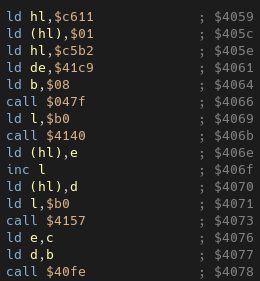

An important thing to emphasize is that it’s not just a “disassembly”, in the sense that it’s not limited to documentation. It can also be re-assembled back into the 2 respective games, which is a vital point; some other video game disassemblies focus solely on documentation without also being buildable.
Of course, just because it’s possible, doesn’t mean it’s easy. When I first started out, I had no comments, no variable names to work with. Everything needed to be documented from scratch. Every variable, every function, needed to be reverse-engineered and given a meaningful name by me. Every address reference and function call needed to be replaced with said names. (This last part could have been partially automated, but it’s provably impossible for machines to do this perfectly.)
This work isn’t completely done, but it’s close. I would estimate it’s over 90% done for Oracle of Ages, and perhaps 70% done for Oracle of Seasons. (The disassembly is a single repository which builds both games, since they share a lot of code.)
Inspiration
This project was inspired by the pokered project, which, similarly, is a disassembly of Pokemon Red and Blue versions. The pokemon hacking community has also done the same with Pokemon Gold/Silver, Crystal, and even Pinball, among many others. They’ve even started decompiling C code for the 3rd gen games, while still recompiling correctly bit-for-bit, which is insane.
Several years ago, I made a project with the pokered repository; a colorization hack for Pokemon Red and Blue, with help from others in the community. This was a one-off project, and I’m not particularly into pokemon hacking. But I very much liked working with the “pokered” disassembly, and decided the Zelda Oracle games deserved the same treatment.
Motivation
So, why do this ungodly amount of work, you ask? Reverse-engineering an entire game, even a gameboy game, is no small task. Well, there are a few reasons:
- Reverse-engineering is fun!
- I get to discover new glitches and unused content. There isn’t much there, but every once in a while I find something neat, like this unused enemy, which is an upgraded version of the “goponga flower” enemies!

- A complete disassembly makes it possible to insert data anywhere, because it can rely on the assembler to recalculate pointers. Without a disassembly or source code, it is only possible to modify data or append data; patches are annoying to make as a result, and this is one reason ASM hacking is seen as intimidating.
- The above point, plus the obvious benefit of documentation, makes ROM hacking (modding) far easier.
Mainly, my motivation boils down to simplifying the process of ROM hack creation - I want to see people design new games with the Zelda Oracles engine. When it comes to hacking games, a disassembly is obviously useful, but I’d argue that it’s particularly important for a Zelda game.
For some games - like, say, Super Mario World - this kind of approach might be overkill. The excellent Lunar Magic editor allows one to design new Mario games without writing a single line of code (not that this has stopped those who are determined).
But a Zelda game has more specific needs. In order to create new and interesting puzzles and mechanics, writing some code (or at least scripts) is a necessity. Rather than trying to hide the complexity of the code with a fancy editor, I want to expose the code as painlessly as possible. This means documenting it and making it easy to modify.
A tool called ZOLE, written by Lin, already exists for Oracles rom hacking. It uses the more traditional approach of editing the ROM directly. I’ve used it a fair bit and even made updates for it. It’s a decent starting point for ROM hacks, but it becomes clear very quickly that a very large number of events are hardcoded and difficult to modify, and new ones are not particularly easy to create. The disassembly is meant to be a basis for ROM hacking which can deal with these issues as flexibly as possible.
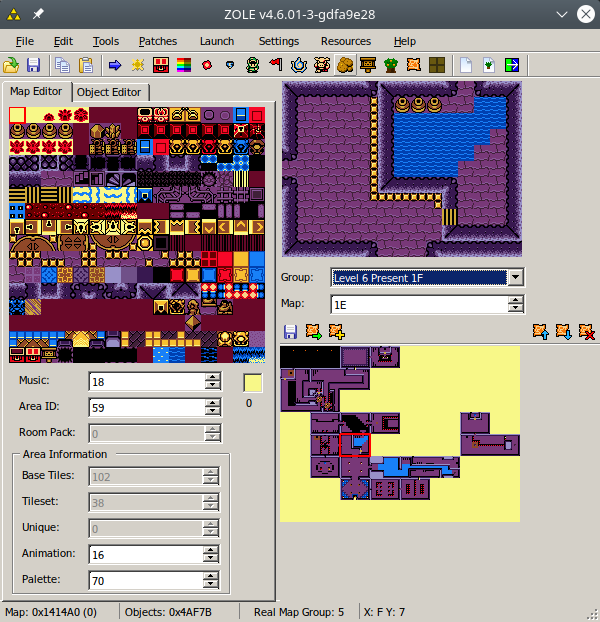
Aside from proof-of-concept things like my variable-width font hack, no complete hacks have been made with the disassembly yet. But it’s had an indirect effect; the Oracles Randomizer by Jangler, which shuffles around all of the obtainable items in the game, used the documentation from the disassembly to greatly speed up development time. That being said, there’s still a major component which needs to be finished if I really want to make ROM hacking easy…
Level creation
Lately I’ve been focusing on the disassembly’s companion software, LynnaLab. It’s all good and well to be able to hack the code, but you can’t make a good ROM hack without being able to create new dungeons too. This is what LynnaLab is for; it’s a GUI program which allows you to design levels by editing the disassembly’s files. This should allow us to replace ZOLE entirely.
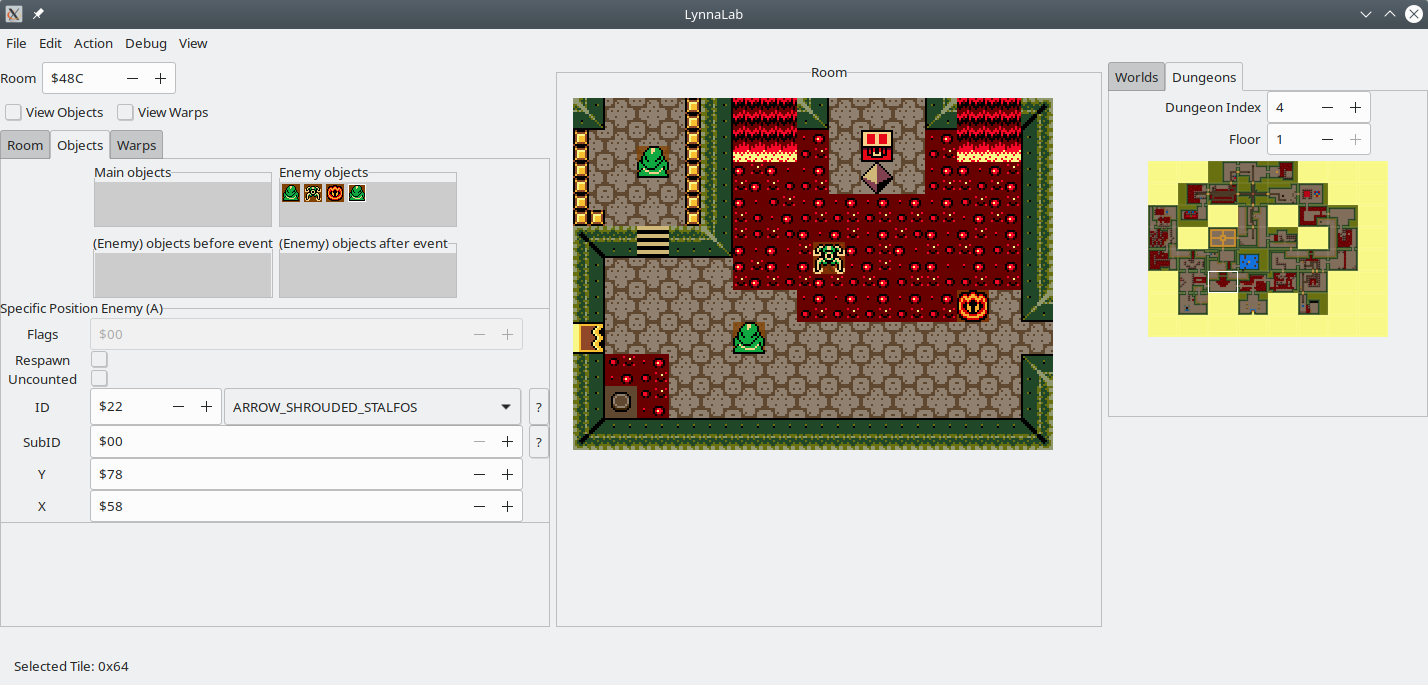
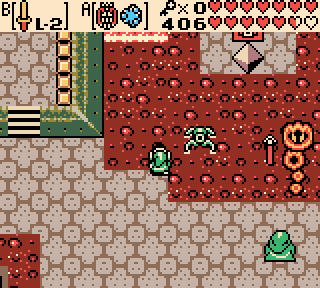
The level-editing software is “secondary”, though, in that it’s built on top of the disassembly; it just edits data that’s already exposed, and documented (mostly), in the disassembly. As a result, LynnaLab will probably be missing a few bells and whistles, such as - perhaps - the ability to edit Link’s starting location. It’s something I might add eventually, but such a thing could be trivially changed by editing the (well-documented) data in the disassembly, so it’s not a priority.
Recent developments
The disassembly has been largely a one-man job through its 5-year run. In just the last few days, though, a user by the name of Dan has been helping out - in particular, he’s been working on the oft-neglected Seasons codebase, particularly by refactoring code from the Ages codebase and re-using it. The games share a lot of code, after all.
Dan also made a fork of the Oracles Randomizer which randomizes entrance and exit locations, making for crazy nonsensical playthoughs of the games. I hear he has even bigger plans in store…
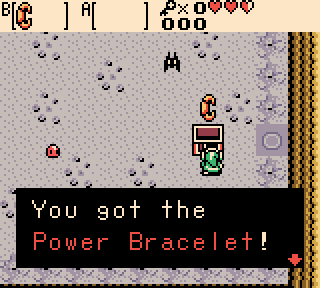
Next steps
It’s been 5 years, but I feel that the pieces are falling into place. The disassembly is close to complete - at least for Ages - while essential features for LynnaLab, such as editing warps, are being worked on now; once that’s ready, all I will need to do is create tutorials to show people how to use it all. Things should be in a stable state soon, and then I hope that we’ll begin seeing some Zelda Oracles romhacks.
I’ll update this blog when I start making said tutorials, but if you’d like to follow developments on this, I’m quite active on this discord server, as are a few other fellow Oracles hackers.